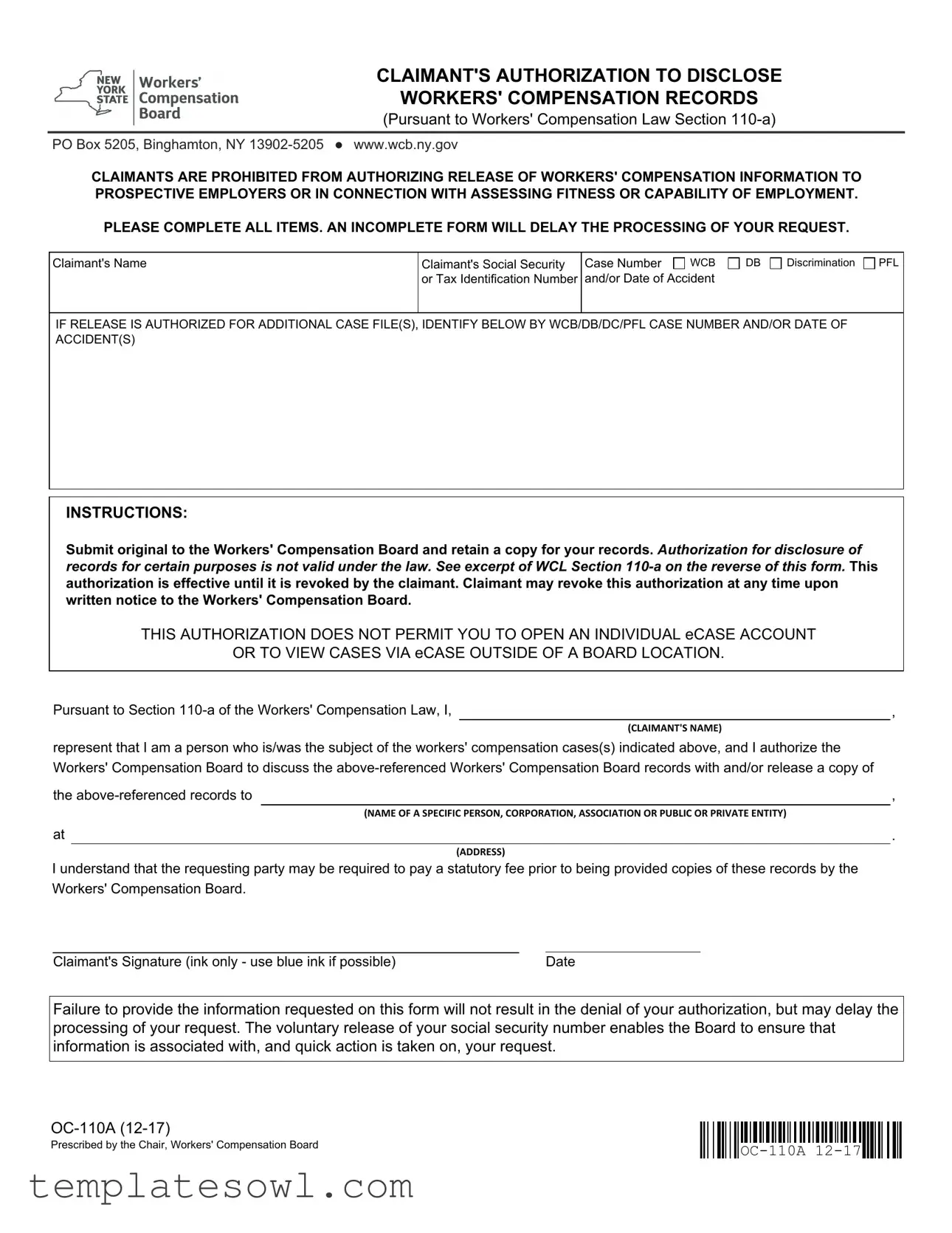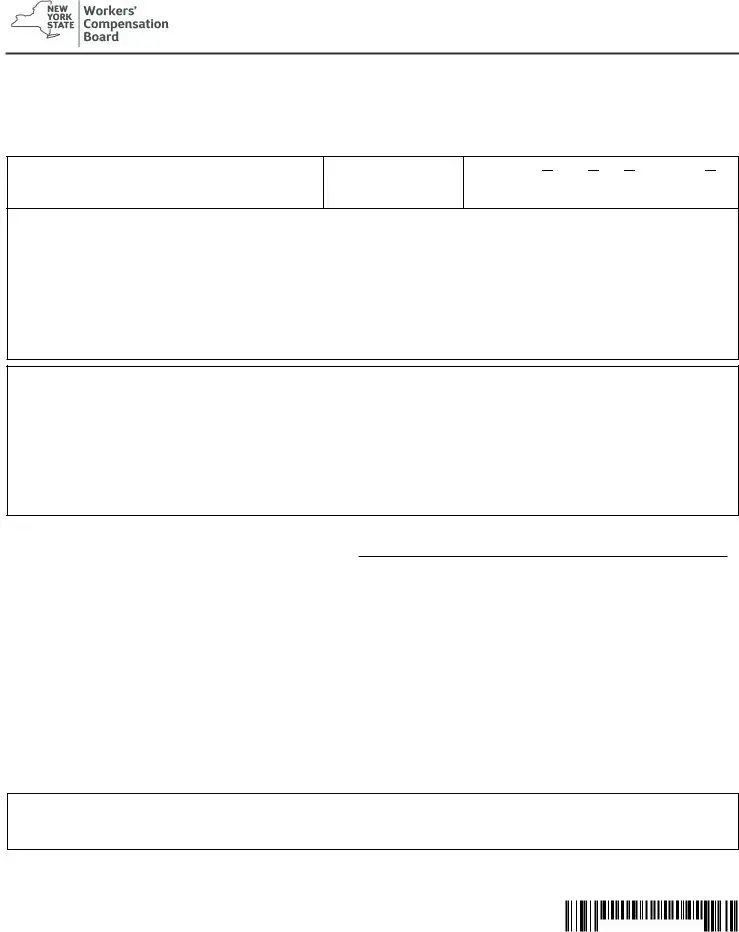What is the purpose of the OC 110A form?
The OC 110A form serves as a claimant's authorization to disclose workers' compensation records. This authorization is specifically outlined under Section 110-a of the Workers' Compensation Law. It allows claimants to permit the Workers' Compensation Board to share their records with a designated individual or organization, provided that the recipient is identified on the form.
Who can I authorize to receive my workers' compensation records?
You can authorize any specific person, corporation, association, or entity to receive your records. However, it’s important to note that this authorization cannot be used for prospective employers or for assessing fitness for employment. The specific recipient must be mentioned, along with their address, on the OC 110A form.
Can I revoke the authorization once I complete the OC 110A form?
Yes, you may revoke the authorization at any time. To do so, simply provide a written notice to the Workers' Compensation Board. Once revoked, the earlier authorization will no longer be valid.
What should I do if I don't have all the information to complete the OC 110A form?
While missing information won't lead to the denial of your authorization, it could delay the processing of your request. It's crucial to provide as much detail as possible to ensure timely processing. If you're unsure about certain items, consider reaching out to the Workers' Compensation Board for assistance.
Where do I submit the OC 110A form once it's completed?
You should send the original OC 110A form to the Workers' Compensation Board at the designated PO Box provided on the form. It's advisable to keep a copy for your personal records as well.
Is there a fee associated with obtaining my records?
Yes, the entity requesting your records may be required to pay a statutory fee to the Workers' Compensation Board before receiving copies of the records. This fee typically covers the administrative costs of processing the request.
What happens if I fail to provide my Social Security number on the form?
While providing your Social Security number is voluntary, it helps the Workers' Compensation Board ensure that your information is matched correctly and assists in speeding up the processing of your request. Failure to provide it will not prevent you from authorizing record release, but it may lead to delays.
What are the legal implications of disclosing my workers' compensation records?
The law places strict limitations on the disclosure of workers' compensation records. Unauthorized disclosure may result in penalties, including fines or criminal charges. Thus, ensure that you understand and adhere to the rules surrounding record release to avoid any legal issues.



 WCB
WCB  DB
DB  Discrimination
Discrimination 
 PFL
PFL